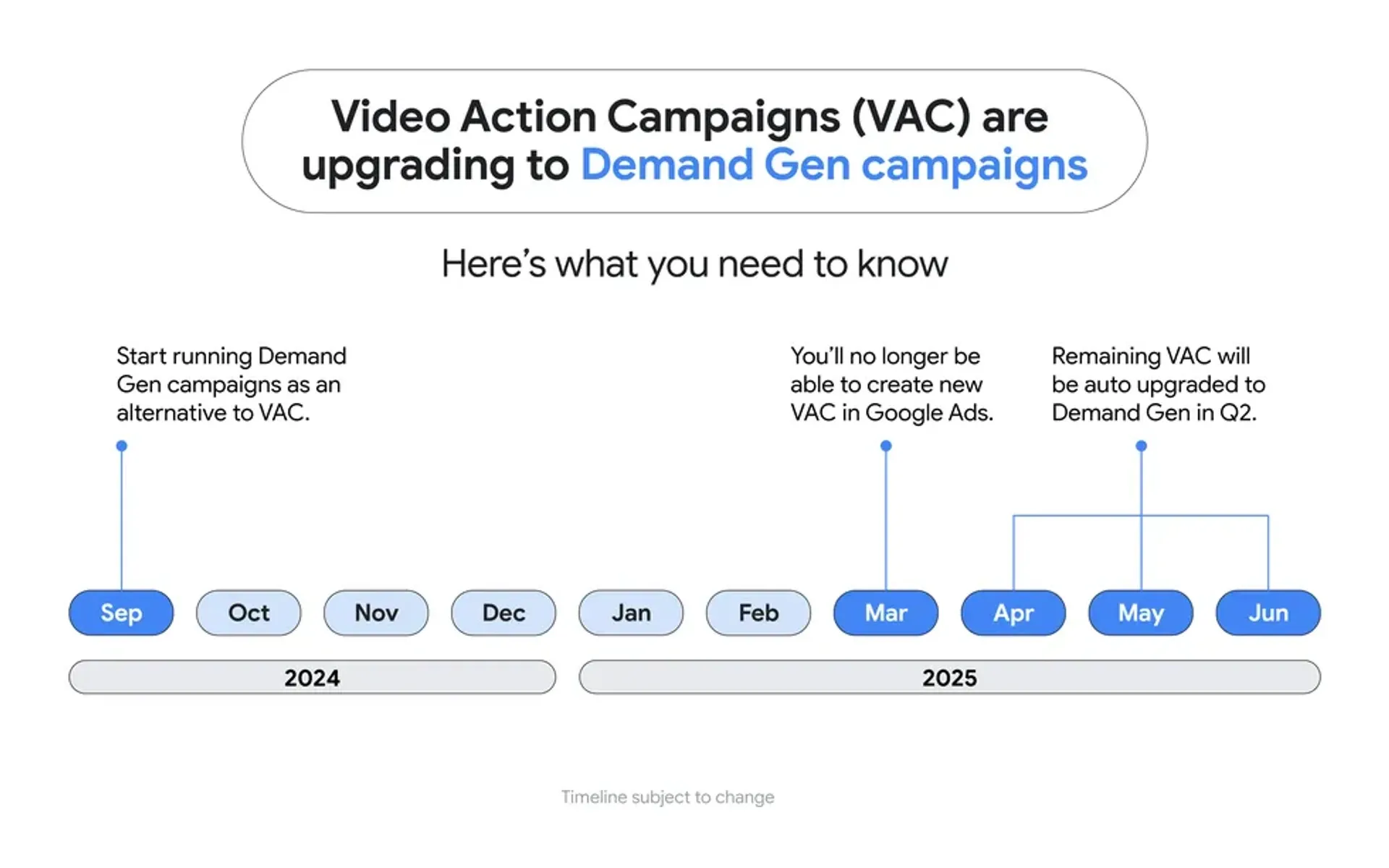Google Ads expert analyzes Video Action campaign shift to Demand Gen
Thomas Eccel breaks down the upcoming shift to Demand Gen campaigns, highlighting key benefits and potential drawbacks for advertisers.

Google is set to shift its Video Action Campaigns to Demand Gen campaigns. Thomas Eccel, a respected figure in the Google Ads community, recently shared his analysis of this impending change on LinkedIn, offering valuable insights for marketers navigating this transition.
Google announced on September 4, 2024, that starting in Q2 2025, all Video Action Campaigns will shift to Demand Gen campaigns. This move aims to enhance advertiser performance by leveraging multi-format strategies across Google's expansive network.

Thomas Eccel, known for his expertise in Google Ads accounts, broke down the pros and cons of this upgrade based on his understanding of the changes. His analysis provides a balanced view of what advertisers can expect.
Advantages of the shift
- Access to Lookalikes: Demand Gen campaigns will give advertisers the ability to use lookalike audiences, potentially expanding reach to users with similar characteristics to existing customers.
- Creative Preferences: Advertisers will have more control over their video placements. Eccel notes that users can now set creative preferences for each video, specifying whether it should appear in-feed, in-stream, or in shorts.
- Granular Location and Language Settings: The upgrade allows for more precise targeting, with location and language settings available at the ad group level.
- Maximum Clicks Bidding: For advertisers focused on driving traffic, the option for maximum clicks bidding will be available.
- AI Tools: While not elaborated on, Eccel mentions the inclusion of AI tools as a pro, suggesting potential automation or optimization features.
Potential drawbacks
- Billing Model Change: Perhaps the most significant change, the billing model will shift from CPM (Cost Per Mille) in Video Action campaigns to a mixed model in Demand Gen. This new model combines CPM and CPC (Cost Per Click), meaning advertisers may now be charged for clicks in addition to impressions.
- Loss of Features: Several features will no longer be available in the new Demand Gen campaigns:
- New customer acquisition targeting
- Bid modifiers
- Frequency caps
- Lead form ads
- Platform-Specific Charges: Different platforms within the Demand Gen ecosystem will have unique engagement metrics:
- Gmail: Charges for teaser clicks (the first click to expand the ad)
- Discover image: CPC model
- Discover video: Engaged view model (charges when someone watches a video for 5 seconds or more and clicks to play or clicks a link)
Expert recommendation: test and analyze
Eccel emphasizes the importance of testing these new campaigns. He advises, "At the end you have to test it out for yourself and based on data decide if DG campaigns are the right choice here or not." This approach aligns with best practices in digital marketing, where data-driven decisions are crucial.
He further stresses the potential opportunity cost of not testing, suggesting that marketers who don't experiment with the new format may miss out on potential benefits.
Contextualizing the changes
While Eccel's analysis provides valuable insights from a practitioner's perspective, it's worth noting some additional context from Google's official announcement:
- Expanded Reach: Demand Gen campaigns will allow advertisers to engage with up to 3 billion monthly users across YouTube, Discover, and Gmail.
- Performance Claims: According to Google, advertisers who utilized both video and image assets in Demand Gen campaigns saw a 20% increase in conversions at the same cost per action compared to those using video assets alone.
- Transition Timeline: Google has outlined a phased approach for the transition, with the full implementation set for Q2 2025.
Key takeaways for advertisers
- Prepare for Mixed Billing: The shift to a combined CPM and CPC model may require adjustments to budgeting and performance metrics.
- Leverage New Targeting Options: Take advantage of lookalike audiences and more granular location and language settings.
- Adapt Creative Strategy: Consider developing both video and image assets to fully utilize the multi-format capabilities of Demand Gen campaigns.
- Plan for Feature Changes: Strategies relying heavily on features being removed (like new customer acquisition or frequency caps) may need to be revised.
- Prioritize Testing: As Eccel emphasizes, testing will be crucial to understanding how these changes impact individual campaign performance.
Thomas Eccel's analysis provides a valuable starting point for advertisers to understand and prepare for the upcoming changes to Google's video advertising offerings.
Marketers are encouraged to closely monitor official Google communications, participate in upcoming webinars, and, most importantly, start experimenting with Demand Gen campaigns to position themselves for success when the full transition occurs in 2025.

